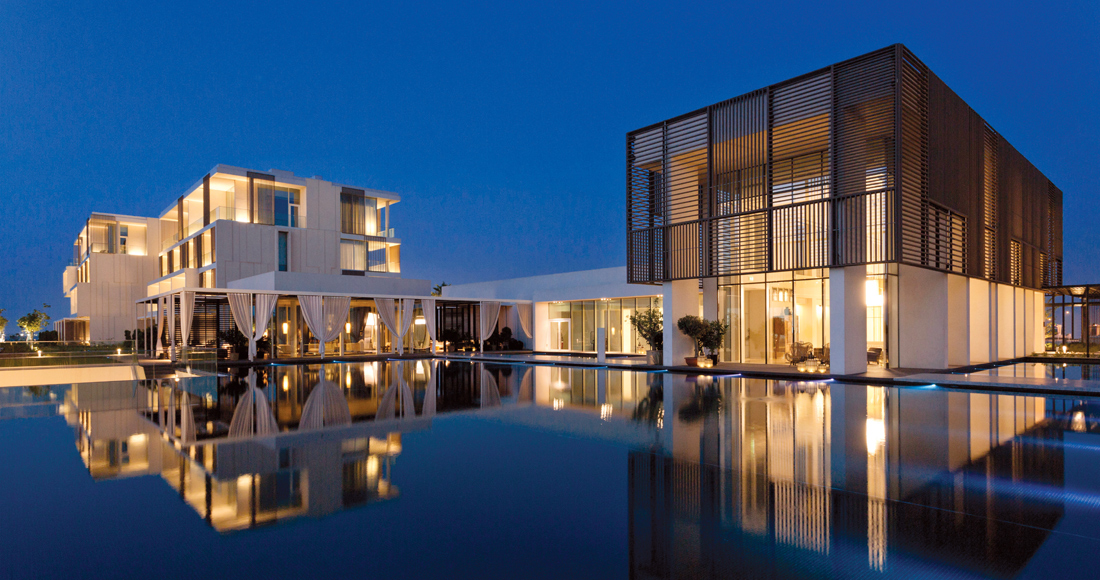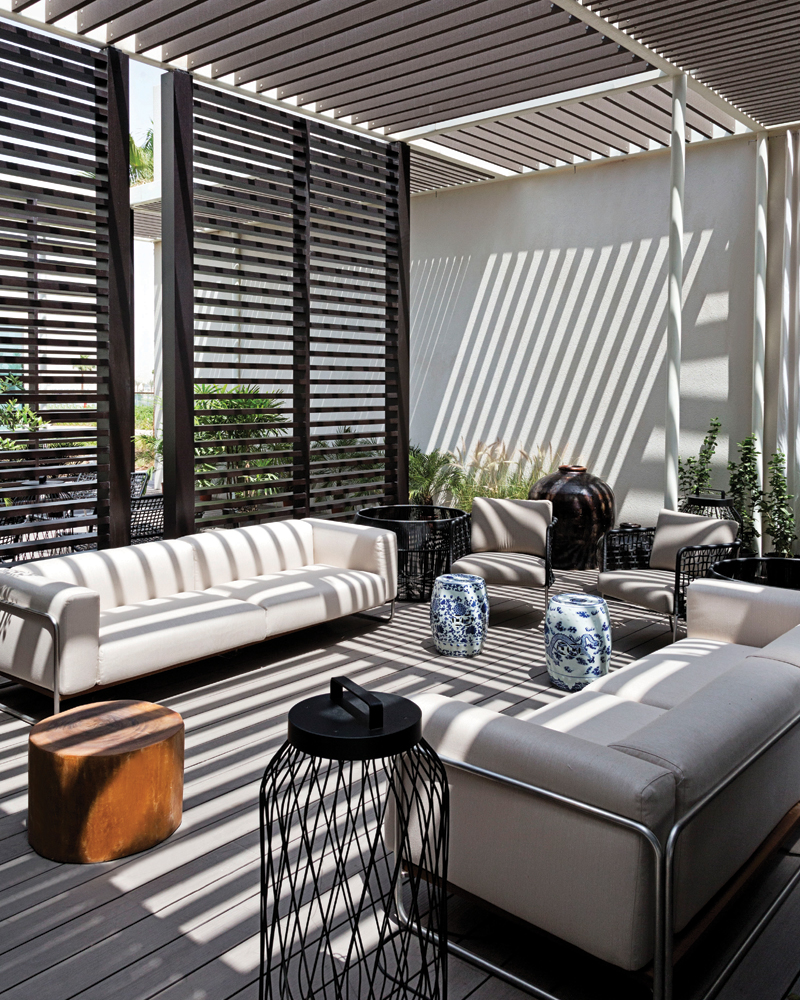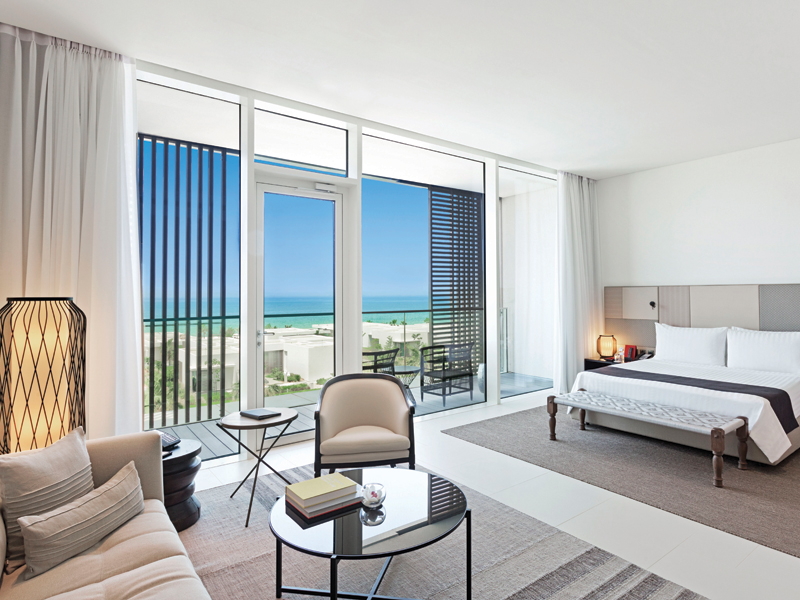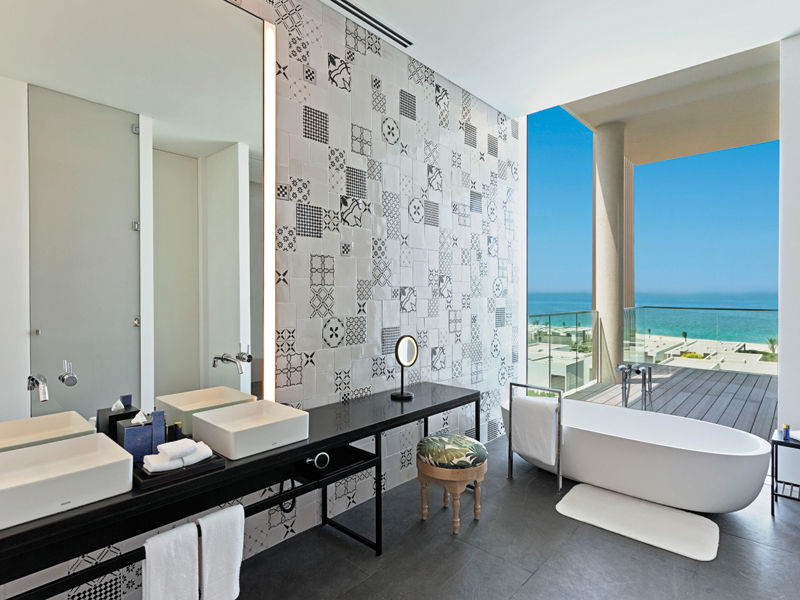Copyright © 2025 Motivate Media Group. All rights reserved.
An Emirati gem: Oberoi Hotel, Ajman
Piero Lissoni creates a modern design that pays homage to local culture.

To be truly contemporary means immersing one’s self in the past to dwell in the present – and the future. Piero Lissoni, internationally renowned Italian designer, has embraced this temporality with the stunning Oberoi Beach Resort, Al Zorah, which has been developed by Solidere International. Just 25 minutes from Dubai, it offers guests a hotel, private villas, restaurants, a spa, swimming pools and a private beach.

I’m very happy and proud of this project. It took three years, but I think that the resort has personality and elegance and is quite different from the other hotels in the region. The surrounding landscape with its natural mangroves and the golf course makes it unique. The mangroves are a real treasure. It’s a very special place.
For the Oberoi, Lissoni not only channelled these surroundings into his design, but also integrated elements of these inspiring environs into a plan which sought to honour Emirati culture, with details inspired by traditionally crafted old Arabic doors, boats and clay pots. Even in the corridors, he sought to recreate the textures and style of traditional woven rugs, but in neutral beiges and cream tones to give them a contemporary spin. His dedication to harnessing the powers of traditional, natural textures also continues in his use of wood and tiles.
“The interior design is sophisticated; rooted in simplicity,” he explains. “The use of large transparent openings and geometrical wood partitions allows the eye to travel freely to the distant horizon. The modern architecture blends with the sensory experience of the local Orient, flavours of India and spicy elements that emerge from the Occident, Africa and China – [yet] in true Italian style.”

The main hotel was designed to feature separate buildings connected by light walkways, with shallow water pools that extend over the inner courtyard where the main restaurant and amenities are situated. An outer cladding of wood panels creates a play of light and shadow as day changes to night, while simple and pure concrete volumes project out from the façade in one continuous movement.
But the key element is the way the hotel and the resort gather their energy and vivacity from their seamlessly integrated flow. The villas merge harmoniously into the overall design. The three-bedroom villas are composed of pure, interconnected volumes covered in smooth white stucco and contain a combination of protected terraces and large openings that face the ocean. The two-bedroom villas are formed by deep cantilevering slabs, which float over the ground floor to create a series of shaded internal and external living areas. Sliding wood panels form a gentle barrier between the inside and the exterior gardens.



The design of the resort’s Sensio Spa and beach restaurant also reflect the same attention to architectural detail. Inspired by the layout of an ancient Medina, the spa is composed of several small buildings placed closely together. Each construction contains a specific amenity and is designed as a pure volume covered in smooth stucco. Slender, open-air walkways provide guests with an intense experience that is further enhanced by the surrounding double-height volumes. The restaurant continues the dimensionality, as its different pavilions are connected by walkways and arranged around a shallow pond.
Already receiving accolades from his peers and design-lovers, his future plans include sea-inspired projects. We can’t wait to get aboard.
The Latest
Quiet Luxury
Studio SuCo transforms a villa in Dubailand into a refined home
Contrasting Textures
Located in Al Barari and designed by BONE Studio, this home provides both openness and intimacy through the unique use of materials
Stillness, Form and Function
Yasmin Farahmandy of Y Design Interior has designed a home for a creative from the film industry
From Private to Public
How ELE Interior is reshaping hospitality and commercial spaces around the world – while staying unmistakably itself
New Episode: In Design With: Ahmed Bukhash
Watch the latest episode on In Design With.
Highlights of the Biennale Architettura 2025
We shine a light on the pavilions from the Arab world at the Venice Architecture Biennale, on display until Sunday 23 November 2025
Read ‘Bold Design’ – Note from the editor – July/August 2025
Read identity magazine's July/August 2025 edition on ISSUU or grab your copy at the newsstands.
Things to Covet
Elevate your spaces with a pop of colour through these unique pieces
Designing Spaces with Purpose and Passion
We interview Andrea Savage from A Life By Design – Living & Branding on creating aesthetically beautiful and deeply functional spaces
Craft and Finesse
EMKAY delivers a bold and intricate fit-out by transforming a 1,800 sqm space into SUSHISAMBA Abu Dhabi, a vibrant multi-level dining experience
An Impressive Entrance
The Synua Wall System by Oikos offers modularity and style
















